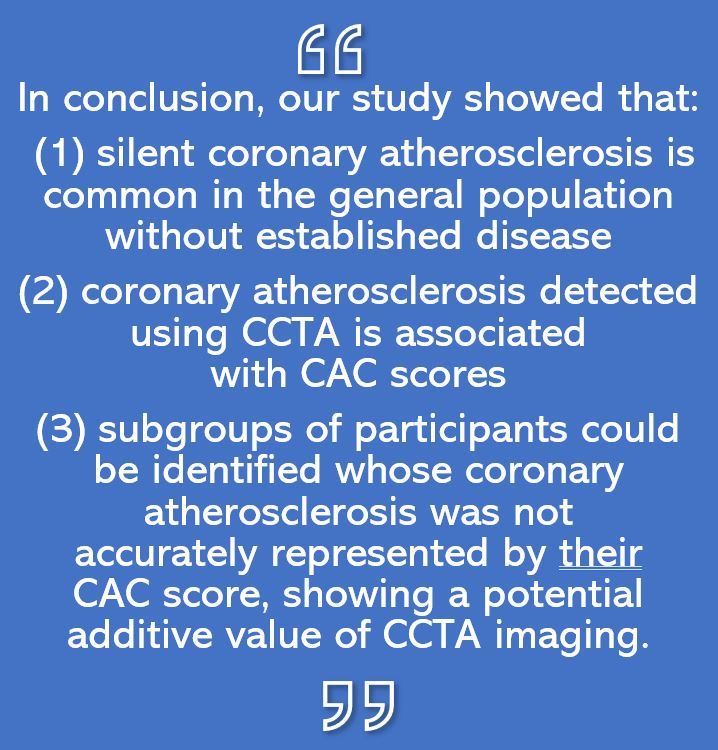- Clinical Technology
- Adult Immunization
- Hepatology
- Pediatric Immunization
- Screening
- Psychiatry
- Allergy
- Women's Health
- Cardiology
- Pediatrics
- Dermatology
- Endocrinology
- Pain Management
- Gastroenterology
- Infectious Disease
- Obesity Medicine
- Rheumatology
- Nephrology
- Neurology
- Pulmonology
CCTA Imaging Helps ID Silent Atherosclerosis in Adults with No Known CVD
CCTA identified atherosclerosis in >40% of middle-aged adults without known coronary heart disease, report Swedish investigators; significant stenosis was found in another 5.2%.
Coronary artery visible on 3D rendering of CCTA. ©samunella/stock.adobe.com

Use of noninvasive coronary computed tomography angiography (CCTA) in combination with coronary artery calcium (CAC) scoring can help identify “silent” atherosclerosis among middle-aged persons without known heart disease, according to research published today in the journal Circulation.
Used together, study authors from Sweden say, the 2 cardiac imaging modalities could significantly enhance high-risk cardiovascular disease (CVD) screening strategies.
“Measuring the amount of calcification is important, yet it does not give information about non-calcified atherosclerosis, which also increases heart attack risk,” said study author Göran Bergström, MD, PhD, professor and senior consultant in clinical physiology in the department of molecular and clinical medicine at the University of Gothenburg’s Institute of Medicine in Gothenburg, Sweden in a press statement from the American Heart Association on the research.
CAC scoring is a common tool to improve prediction of cardiac events beyond traditional risk scores. However, the CAC score provides no information on location of coronary atherosclerosis, degree of stenosis, or presence of noncalcified plaques, the authors state. They point to data collected on symptomatic patients that suggest CCTA may improve discriminatory power beyond that of CAC for future coronary events but say corroborating evidence has yet to be published and, further, that there are currently no published studies that compare CCTA and CAC data in a population-based prevention study.
Bergström and colleagues thus set out in the current study to determine the prevalence of subclinical atherosclerosis in a general population without established heart disease, and to estimate the correlation between CCTA findings and CAC scores.
STUDY
The researchers randomly recruited 30 154 randomly from the Swedish census registry from 2013 to 2018 as part the Swedish Cardiopulmonary Bioimage Study (SCAPIS). Inclusion criteria comprised no known coronary heart disease (ie, no previous myocardial infarction [MI], cardiac procedures) and availability of high-quality results from CCTA and CAC imaging performed using dedicated dual-source CT scanners. Noncontrast images were scored for CAC. CCTA images were visually read and scored for coronary atherosclerosis per segment (defined as no atherosclerosis, 1% to 49% stenosis, or ≥50% stenosis). External validity of prevalence estimates was evaluated using inverse probability for participation weighting and Swedish register data.
The final study group numbered 25 182 individuals without known coronary heart disease; half were women.
RESULTS CCTA-Detected Atherosclerosis
- Of the 25 182 participants in SCAPIS who underwent a technically successful CCTA and had not previously experienced a MI or coronary intervention, any CCTA-detected atherosclerosis was found in 42.1% (95% confidence interval [CI], 41.3–42.7%) and any significant stenosis (≥50%) in 5.2% (95% CI, 4.9–5.5%).
- Severe forms of coronary atherosclerosis were less common, with significant stenosis in the left main, proximal LAD, or 3-vessel disease found in 1.9% (95% CI, 1.7–2.0%).
- Any noncalcified plaques were found in 8.3% of the population.
- Among men, the prevalence of atherosclerosis was 1.9 times higher than in women and increased sharply with age in both sexes ie, 1.8 times higher in the upper (0 to 64 years) vs lower (50 to 54 years) age range in the combined population.
- Disease onset occurred approximately 10 years earlier in women than in men for both 1-49% and ≥50% stenosis.
- Risk of atherosclerosis also increased with number of risk factors identified.

Prevalence of atherosclerosis on CCTA increased with CAC score
- Among those with a CAC score >400, all had atherosclerosis and 45.7% had significant stenosis
- In those with a CAC score of 0, 5.5% had atherosclerosis and 0.4% had significant stenosis and prevalence increased with higher predicted risk.
- In participants with a CAC score = 0 and who had intermediate 10-year risk of atherosclerotic CVD according to the Pooled Cohort Equation, 9.2% had CCTA-verified atherosclerosis.
- When adjusted to Swedish background population matched for age, prevalence estimates changed only marginally; authors report the estimates had excellent external validity.
Bergström points out in the AHA statement that current guidelines (2019) from the AHA and American College of Cardiology state the risk of future MI is low in adults with CAC = 0 and intermediate level of risk factors.
“We found that 9.2% of people who fit that description had atherosclerosis in their coronary arteries visible by CCTA,” said Bergström. “One strength of CCTA is that not-yet calcified atherosclerosis can be detected. We found that 8.3% of the adults had one or more non-calcified plaques. Non-calcified atherosclerosis is believed to be more prone to cause heart attacks compared with calcified atherosclerosis.”
He concludes: “It is important to know that silent coronary atherosclerosis is common among middle-aged adults, and it increases sharply with sex, age and risk factors,” according to Bergström. “A high CAC score means there is a high likelihood of having obstruction of the coronary arteries. However, more importantly, a zero CAC score does not exclude adults from having atherosclerosis, especially if they have many traditional risk factors of coronary disease.”
Unfortunately, it is not possible to determine if the findings based on CCTA are accurate predictors of heart disease in this population as a major study limitation is the absence of follow-up about how cardiovascular heart disease develops in this population.
